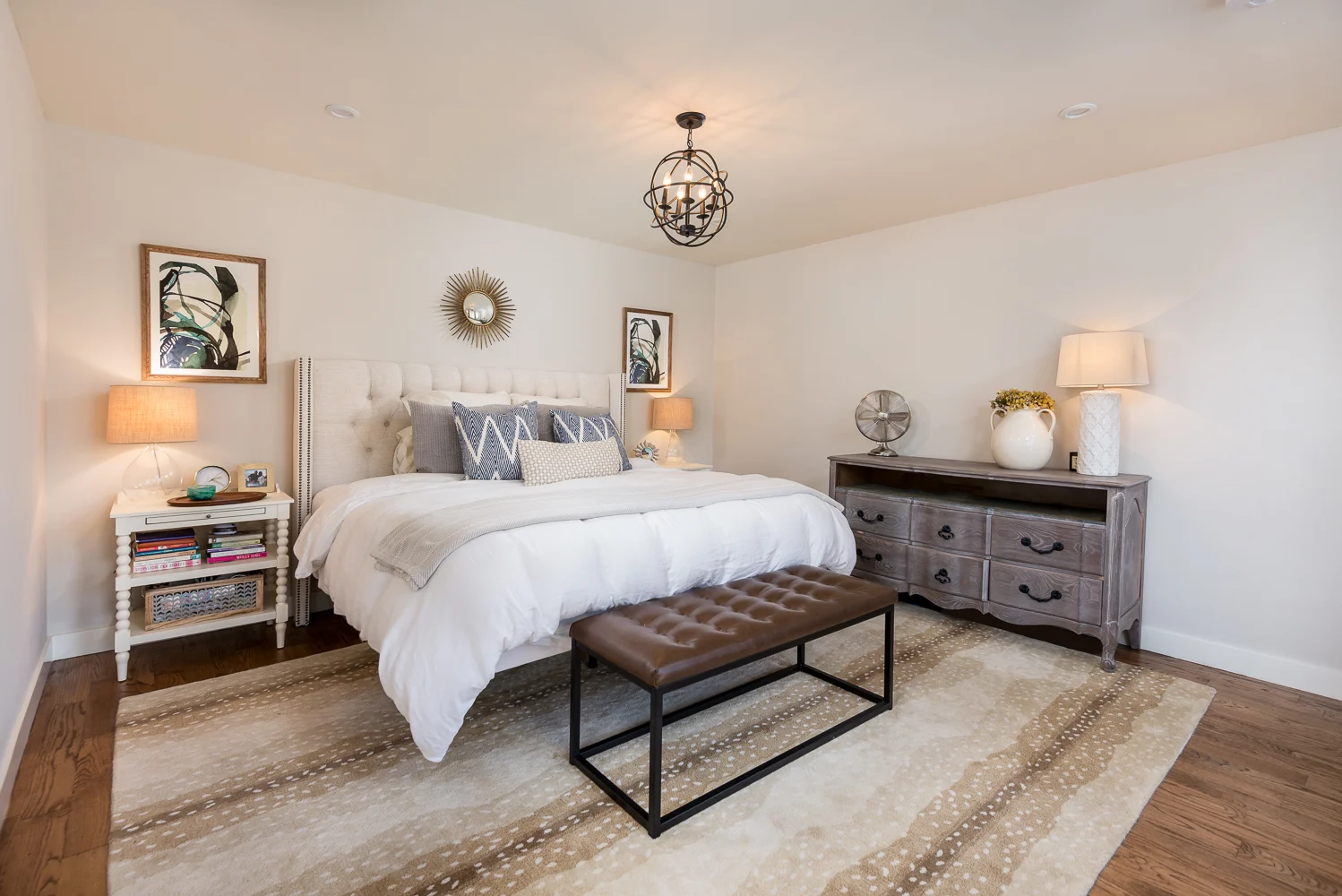5 Things to Include in Your In-Law Suite Addition
Sep 3, 2021

As multi-generational households become increasingly common, in-law suite additions offer an excellent solution for creating separate living spaces that provide privacy and independence for family members. These custom-built home additions can be tailored to meet the needs of aging parents, active in-laws moving in to help with the kids, "boomerang" millennials, or any other family members who may need a dedicated living space while staying nearby. One thing we often hear is that though these spaces should be inviting, given the possible occupants, they perhaps should be too inviting. As design-build remodeling experts in Dallas, Sardone | McLain is here to guide your tour into the wide range of possibilities an in-law suite offers.
Examine Local Building Codes
Before starting your in-law suite addition, it's crucial to check local building codes and zoning regulations. Most states, municipalities, and counties have specific ordinances that regulate the size, design, and placement of additions to ensure they meet safety and community standards.
Research the specific building codes and zoning laws in your area. This information can usually be found on your local government’s website or by visiting the planning and zoning department.
A professional design-build remodeler will have extensive knowledge of local building codes and can guide you through the permit process. They can troubleshoot potential issues and ensure your addition complies with all relevant regulations. Your remodeler will prepare the necessary documents and submit permit applications, making the process smoother and less stressful.
Find the Right Spot for Your In-Law Suite
Selecting the ideal location for your in-law suite addition is a crucial step in planning. The right spot will ensure convenience, accessibility, and comfort for your family members. Here are some options and considerations to keep in mind.

Attached Additions
Advantages: An attached in-law suite, such as a home extension or garage conversion, provides easy access to the main house while maintaining privacy. This setup can be particularly beneficial for families who want to keep their loved ones close but still provide them with their own space. Attached additions are great for teens. The privacy and gathering space attract friends and ensure you know exactly where your kids are.
Considerations: When planning an attached addition, consider how it will affect your home’s overall floor plan. Ensure convenient access points while maintaining the privacy of the main house and the suite. Additionally, consider the integration of utilities and how the new space will be heated, cooled, and ventilated.
Cost Factors: Attached additions typically cost less than detached units because they share existing walls and utilities. They may still require significant modifications to the existing structure and provide an opportunity to revamp other areas of the home while we create the in-law suite.

Detached Units
Advantages: A stand-alone guest house or accessory dwelling unit (ADU) offers complete independence and privacy. This option can be ideal for families who want to create a distinct living area for their in-laws or returning children.
Considerations: For detached units, consider the need for a walkway or pathway that connects the two homes. This pathway should be well-lit and accessible to ensure safety and convenience. Detached units may require separate utility hookups, which can add to the cost but provide flexibility in managing the living space.
Cost Factors: Detached units often have the highest initial costs due to the need for separate foundations, utility hookups, and additional construction materials.
Basement Conversions
Advantages: Converting a basement into an in-law suite can be a cost-effective way to create additional living space. Basements often have the necessary square footage and can be designed to include a separate entrance, enhancing privacy.
Considerations: When planning a basement conversion, ensure the space meets all safety codes, including proper egress windows and ventilation. Address potential moisture issues and ensure the space is adequately insulated and comfortable.
Cost Factors: Converting a basement can be more affordable than building new structures. However, to meet safety codes, it may require extensive waterproofing, insulation, and egress solutions.
Design with Accessibility in Mind
When planning an in-law suite addition, it's crucial to consider the long-term needs of its occupants, especially if they are elderly or have mobility issues. You also never know who will need these features in the future. Here are some key elements of universal design to ensure the space is safe, comfortable, and accessible for everyone.

Wheelchair Accessibility
Entryways and Hallways: Ensure doorways and hallways are wide enough to accommodate wheelchairs. According to the Americans with Disabilities Act (ADA), doorways that provide passage on accessible routes must have a minimum clear width of 32 inches. This measurement is taken between the frame's stop and the door's face when the door is open to 90 degrees. If a 32-inch-wide opening is not possible, the opening should be as wide as possible. Whenever possible, our team recommends 34 inch openings.
Ramps and Elevators: If the suite is not on the ground level, consider installing ramps or elevators. These features can provide easy access without the need for stairs.
Bathroom Safety
Grab Bars and Non-Slip Flooring: To provide support, install grab bars in the shower and near the toilet. To prevent falls, use non-slip flooring. Many elegant materials serve this purpose without compromising on style.
Walk-In Showers: Consider a walk-in shower with a bench and hand-held shower head. This design is safer and more convenient for individuals with limited mobility while offering a highly desirable amenity.
Vanity: Taller countertops minimize stopping or bending over and floating vanities allow room for legs for easy wheelchair use.

Kitchen Design
Lower Countertops and Cabinets: Design kitchen counters and cabinets at lower heights for easy access. Consider pull-out shelves and drawers for added convenience.
Accessible Appliances: Choose appliances that are easy to use and reach. Side-by-side refrigerators and microwaves at counter height are good options.
Lighting and Controls
Adequate Lighting: Ensure the suite has ample lighting, especially in hallways and staircases. Motion-sensor lights can add convenience and safety.
Easy-to-Use Controls: Install light switches, thermostats, and other controls at accessible heights. Rocker switches are easier to use than traditional toggle switches.

Comfort Considerations for Planning Your In-Law Suite
Privacy and Independence
Ensuring privacy and independence for the in-law suite occupants is crucial. Consider incorporating separate entrances and private outdoor spaces, such as a patio or garden. This allows your family members to enjoy their own space while still being close to the main house.
Soundproofing
Effective soundproofing can enhance the comfort of the main house and the in-law suite. Soundproof insulation in walls, floors, and ceilings minimizes noise transfer. Take this one step further and create a nice headphone setup to preserve your personal peace while the in-laws let their angry TV news rip on the other side of the wall.
Aesthetic Integration
Seamlessly integrating the in-law suite with the existing home design is important for maintaining the overall aesthetic appeal. Work with your remodeler to ensure the addition complements the architectural style and finishes of your main house. This includes matching exterior materials, rooflines, and window styles.
Select a Design-Build Remodeler
Choosing the right design-build remodeler is a critical step in ensuring your in-law suite addition project is successful. First, verify the contractor's credentials to ensure they hold the necessary licenses and certifications to operate in your area. In Texas, general contractors don’t require a specific license, but verifying credentials and certifications remains essential. Check that the contractor is adequately insured and bonded to protect you from liability and cover any damages or issues during the project.
Experience and expertise are equally important. Review the contractor’s portfolio to assess their experience with similar projects, particularly in-law suite additions or other home modifications that align with your vision. If your in-law suite requires specific accessibility features, ensure the contractor has experience designing and building accessible spaces. A design-build firm with a great planning process can capitalize on the opportunities your space offers while keeping your goals and budget front and center.
Your In-Law Suite in Dallas Deserves Dallas’ Design-Build Experts
Sardone | McLain specializes in designing and building personalized in-law suites that enhance your home’s value and provide a safe, independent living environment for your loved ones. Contact us today for a consultation, and let us help you bring your vision to life.
